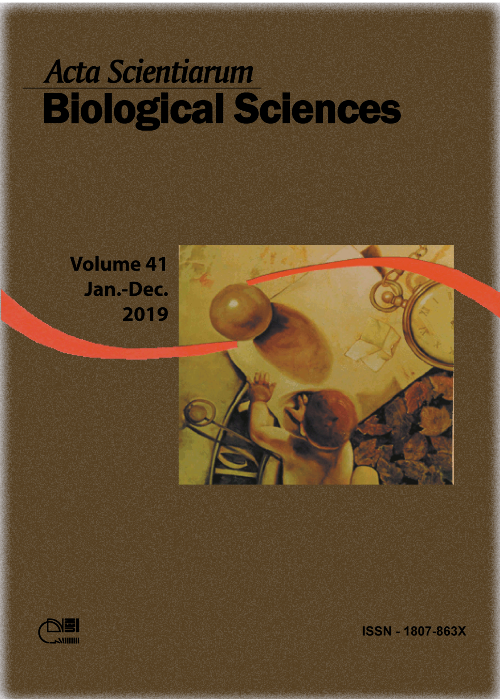Histopathological analysis of liver of the catfish <i>Pimelodus maculatus</i> in a tropical eutrophic reservoir from Southeastern Brazil
Keywords:
liver, freshwater fish, hepatic alterations, reservoirs.
Abstract
We described liver tissues of the long-whiskered catfish Pimelodus maculatus using histological techniques through structures stained with hematoxylin and eosin. The main aim was characterize the tissues and eventual changes, since this organ has a notable sensitivity to change in altered aquatic systems. The liver has a parenchyma divided into irregular lobules containing the exocrine pancreas (hepatopancreas) that have pancreatic cells arranged around a branch of the portal vein. The hepatocytes are diffuse and arranged in cords. The organization of exocrine pancreatic tissues is similar to the acinar morphology of many teleosts. Six types of liver alterations were found: 1) cytoplasmic vacuolization; 2) congestion; 3) inflammatory infiltrated; 4) infiltration of adipocytes; 5) steatosis; 6) cytoplasmic granules. Incidence of melano-macrophage centers were observed in the liver, suggesting an immune response to contaminants. However, we cannot associate directly such changes with the eutrophic conditions of the reservoir because we have no available reference area to compare. These findings are baseline contribution that enable comparisons with similar fish species in other tropical aquatic systems in further studiesDownloads
Download data is not yet available.
Published
2019-04-16
How to Cite
Araujo, F. G., Gomes, I. D., Nascimento, A. A. do, Santos, M. A. J. dos, & Sales, A. (2019). Histopathological analysis of liver of the catfish <i>Pimelodus maculatus</i> in a tropical eutrophic reservoir from Southeastern Brazil. Acta Scientiarum. Biological Sciences, 41(1), e41039. https://doi.org/10.4025/actascibiolsci.v41i1.41039
Section
Zoology
DECLARATION OF ORIGINALITY AND COPYRIGHTS
I Declare that current article is original and has not been submitted for publication, in part or in whole, to any other national or international journal.
The copyrights belong exclusively to the authors. Published content is licensed under Creative Commons Attribution 4.0 (CC BY 4.0) guidelines, which allows sharing (copy and distribution of the material in any medium or format) and adaptation (remix, transform, and build upon the material) for any purpose, even commercially, under the terms of attribution.
Read this link for further information on how to use CC BY 4.0 properly.
0.6
2019CiteScore
31st percentile
Powered by 

0.6
2019CiteScore
31st percentile
Powered by 











1.png)




3.png)













